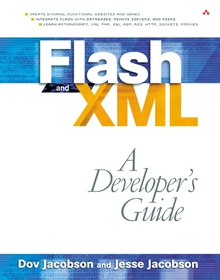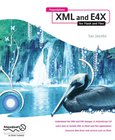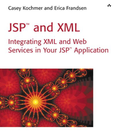Flash and XML
A Developer's Guide

Book Details:
| Publisher: | Addison-Wesley Professional |
| Series: | Addison Wesley , Developer's Guide |
| Author: | Dov Jacobson |
| Edition: | 1 |
| ISBN-10: | 0201729202 |
| ISBN-13: | 9780201729207 |
| Pages: | 368 |
| Published: | Nov 20 2001 |
| Posted: | Nov 19 2014 |
| Language: | English |
| Book format: | CHM |
| Book size: | 3.36 MB |
Book Description:
Instead of just "gee-whiz" animation or cool user interfaces, Flash pros need to build truly useful sites that are viable for the long-term. That means interfacing Flash with dynamic content, backend databases, server-based applications, and even with other live users. The key to all these is XML. Now, there's a book that shows you exactly how to build enterprise Flash applications that integrate XML -- and leverage its full power. Flash and XML is structured in 19 progressive lessons. In each lesson, the authors teach a key principle of Flash enterprise integration by first explaining it, and then demonstrating it with working code. The book begins with an introduction to Flash and ActionScript that's ideal for working developers, and also serves as a useful refresher for Flash professionals. Next, the authors introduce XML, review the role of HTTP in Web development, and start writing PHP-based server code for accessing back-end data. Next, they show how to extend Flash and server-side systems to a third-tier, connecting with back-end databases via SQL. Every chapter's code samples build on what's come before, constructing a robust application that encompasses client-side Flash code, server-side XML, back-end remote database access, and even emulated "peer-to-peer" connections. For both Flash professionals (with or without XML experience) and software engineers involved in Web development (with or without Flash experience).
Download Link:
Related Books:
Foundation XML and E4X
For Flash and Flex
XML is the lingua franca of the Web. All designers and developers working in a web environment need a sound understanding of XML and its role in application development. Many software packages and organizations allow for the exchange of data using an XML format. Web services and RSS feeds are now commonplace. For those working with Flash and Flex, a thorough understanding of XML is particularly important. XML documents are one option for the data provided to SWF applications. Flash and Flex can load, display, and modify XML content. These applications can also send XML content to other applications for updating or for use in different situations. ActionScript 3.0 introduced some fundamental changes to the way in which Flash and Flex applications wo...
JSP and XML
Integrating XML and Web Services in Your JSP Application
JavaServer Pages technology allows Web developers and designers to rapidly develop and easily maintain information-rich, dynamic Web pages that are platform independent. JavaServer Pages technology uses XML-like tags and "scriptlets" written in the Java programming language to encapsulate the logic that generates the content for the page. This book is geared towards JavaServer Pages developers, bringing them a confident functionality and usage with XML. There are many examples within the book that are usable in other projects. The reader learns to build and expand custom JSP tags, which can realistically be used on any JSP project. Many advanced topics are also covered to maintain the interest of the more accomplished JSP developer....
A Designer's Guide to Adobe InDesign and XML
Harness the Power of XML to Automate your Print and Web Workflows
Is this book for programmers? Written specifically for graphic designers and production artists already comfortable working with Adobe InDesign, this book teaches you how to automate publishing without learning a lot of scary code. XML simplifies the process of moving content in and out of your layouts and can speed up any print or Web assignment. Why should I care about XML? If you're managing data-intensive layout projects, and you want to keep that data consistent, accurate, and up-to-date, then incorporating XML can help. You can also use XML to automate processes like importing text and large numbers of graphics into a layout, or repurposing content from one application to another. Do I need additional plug-ins or special software? You need onl...
2007 - 2021 © eBooks-IT.org



